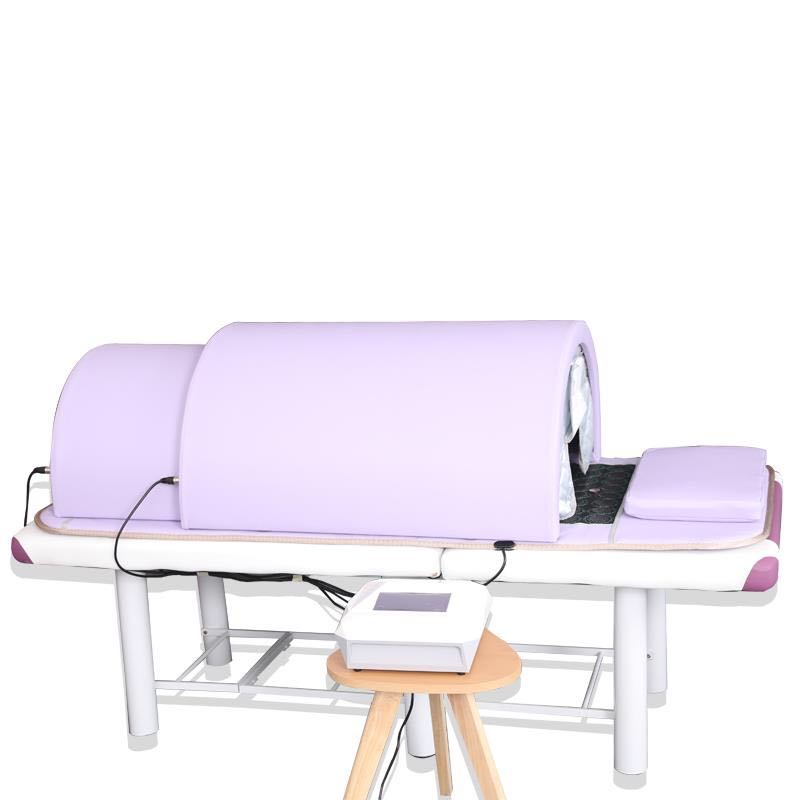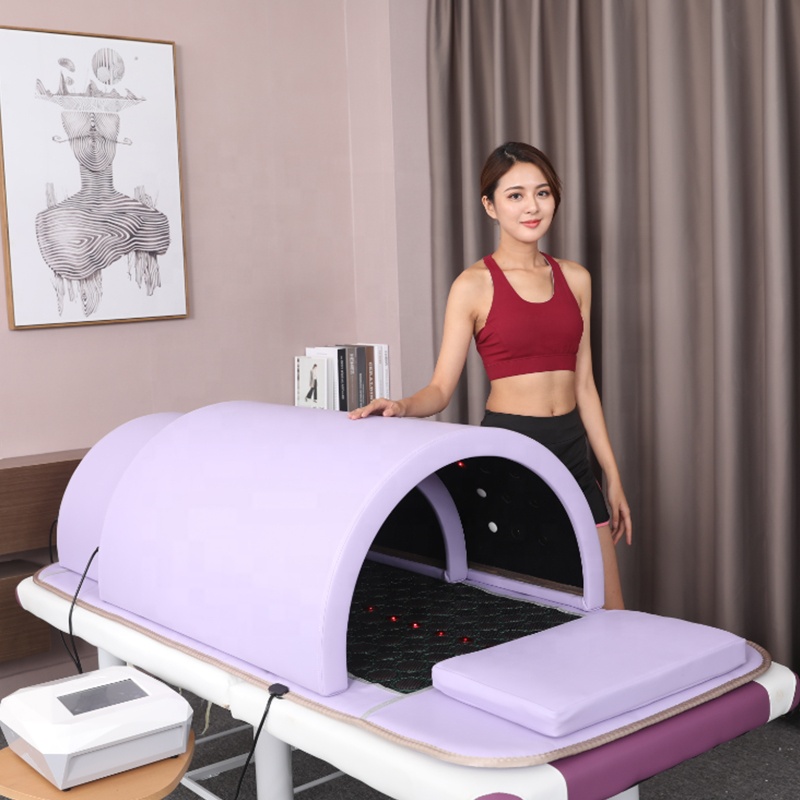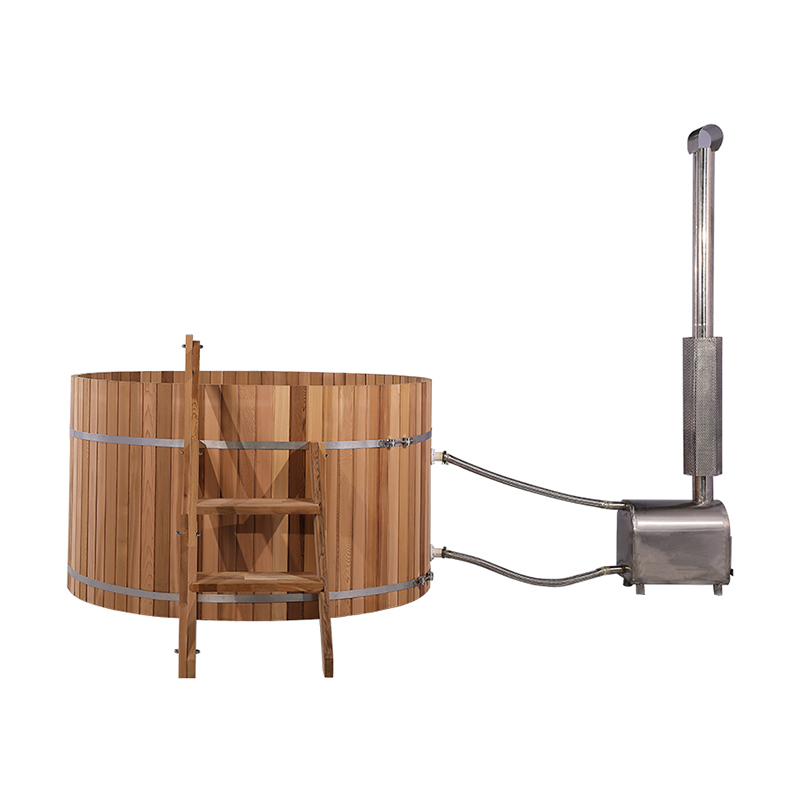We often receive inquiries from sauna buyers about the health benefits of a "Finnish" or "dry" sauna (sometimes called "conventional") versus an infrared sauna. Infrared saunas emit infrared light waves to generate heat within the body rather than heating the surrounding air, so sweating is cooler than in a traditional sauna. In contrast, a dry sauna generates heat from a stove (either wood-burning or electric) that heats the air inside the sauna. Water may be sprinkled on the stones on top of the stove to create a brief burst of steam, but the primary heating method is still dry.

Sauna bathing has a variety of health effects, which can be divided into the following categories:
- Improves cardiovascular health
- Reduce neurodegenerative diseases (such as dementia and Alzheimer's)
- Detoxification
- Mental health and cognitive benefits
- Relax and improve sleep quality
- Improve physical fitness and endurance
- Pain relief and muscle recovery
- Reduces inflammation and boosts immunity
- Skin health and rejuvenation
- Improve respiratory function
- Weight loss (but read on to understand the nuances!)
- Reduce all-cause mortality
Dry Sauna vs Infrared Sauna
Improves cardiovascular health
The largest sauna study comes from Finland, a country with a population of only 5.5 million but about 3 million saunas. A landmark study spanning more than 20 years found that regular dry sauna use was associated with a lower risk of death from cardiovascular disease, sudden cardiac death, and fatal coronary heart disease. The results were striking. For example, compared with men who used saunas once a week, men who used saunas moderately (2-3 times per week) were 22% less likely to experience sudden cardiac death, while men who used saunas frequently (4-7 times per week) were 63% less likely to experience sudden cardiac death.
The average sauna temperature is over 170 degrees Fahrenheit. Further research shows that most cardiovascular benefits begin to accrue above 175 degrees Fahrenheit, which is much higher than the 110-135 degrees Fahrenheit (about 57-63 degrees Celsius) that infrared saunas can reach.
As described by Dr. Rhonda Patrick, one way to think about it is that a sauna is similar to moderate intensity aerobic exercise, so many of the same physiological effects that occur during exercise occur in a sauna—increased heart rate, increased core body temperature, sweating, and lower blood pressure and resting heart rate after exercise/sauna. Higher temperatures lead to greater levels of these effects, so the ability of a dry sauna to achieve these temperatures is a relative advantage.
However, infrared saunas also heat the body, and a growing body of research suggests they may have cardiovascular benefits, too. You can also opt for a hybrid sauna, which has both infrared lamps and a heater powerful enough to heat the room to more than 175 degrees Fahrenheit.
Source: (1) Association between sauna bathing and fatal cardiovascular events and all-cause mortality
Rating: Dry Sauna: 1 — Infrared Sauna: 0
Reduce neurodegenerative diseases
Normal cognitive function relies on adequate blood flow to the brain and peripheral nervous system. As such, cardiovascular disease and cognitive decline often go hand in hand, so it’s no surprise that sauna users have been shown to reduce their risk of not only cardiovascular disease, but also dementia and Alzheimer’s disease.
Another benefit may be that exposure to heat (along with exercise) increases the production of BDNF (brain-derived neurotrophic factor), a protein that promotes neurogenesis (the growth of new neurons in the brain).
The positive cognitive outcomes were dose-dependent, meaning that the more frequent the sauna bathing, the stronger the health benefits. A major Finnish study (2) showed that participants who bathed in a sauna 4-7 times per week had a 67% lower risk of dementia and a 65% lower risk of Alzheimer’s disease compared with those who bathed in a sauna once per week, using multivariate analysis adjusted for baseline age, alcohol consumption, body mass index (BMI), systolic blood pressure, smoking status, type 2 diabetes, previous myocardial infarction, resting heart rate and serum low-density lipoprotein cholesterol, physical activity, and socioeconomic status.
Again, the mechanism of action is heat-induced, and most of the research has been done on dry saunas, so this is the second area where we strongly believe dry saunas are superior to infrared saunas.
Source: (2) Sauna bathing is negatively associated with dementia and Alzheimer's disease in middle-aged Finnish men
Rating: Dry Sauna: 2 — Infrared Sauna: 0
Detoxification
The high temperatures produced by a sauna cause the body to sweat through its pores, which is one of the body's natural ways of removing toxins such as cadmium, aluminum, and even bisphenol A. The heat also increases blood circulation, helping toxins to be transported from tissues to the surface of the skin, where they are then excreted through sweating.
Because Finnish saunas are hotter, people tend to sweat more. A study published in the Journal of Environmental and Public Health found that traditional saunas were more effective than infrared saunas in removing certain heavy metals, such as mercury and cadmium, from the body. The researchers believe this may be because sweating in traditional saunas is more intense and lasts longer (4).
However, the deeper penetration of infrared heat is thought to mobilize toxins from fat cells into the bloodstream, where they are then excreted through sweat. This process is sometimes considered more effective for detoxification because it reaches toxins at a deeper level. The extent to which different toxins are removed, and how efficient Finnish and infrared saunas are at removing toxins, remains to be further scientifically explored, but at this time there is no clear advantage for Finnish saunas in this regard.
Sources: (3) Excretion of bisphenol A in humans: the blood, urine, and sweat (BUS) study; (4) Sauna bathing and systemic inflammation
Rating: Dry sauna: 3 points — Infrared sauna: 1 point
Mental health and cognitive benefits
Research shows that infrared saunas can reduce symptoms of depression in people with mild depression, such as improved appetite, reduced physical pain, and anxiety.
Dry sauna research suggests that it may help people with depression in a number of ways, for example by increasing beta-endorphins, which are part of the body’s natural pain-relieving system.
Other cognitive benefits of dry saunas come from two key players in cognitive and psychological function – norepinephrine (a hormone and neurotransmitter that enhances focus) and prolactin (a hormone that helps the brain function faster).
When young men stayed in a dry sauna at temperatures up to 80 degrees Celsius (176 degrees Fahrenheit) until they reached subjective fatigue, their norepinephrine levels rose by 310% and prolactin levels rose by 900%. Levels of cortisol, a hormone often associated with stress responses, decreased slightly. Similarly, a study in women found that after participating in a 20-minute dry sauna twice a week, norepinephrine levels rose by 86% and prolactin levels rose by 510%.
In summary, both infrared and sauna use may have benefits for mental health, but more research has focused on dry saunas, which have higher temperatures than infrared saunas.
Sources: (5) Repeated heat therapy can reduce anorexia and subjective discomfort in patients with mild depression; (6) Plasma β-endorphin and adrenocorticotropic hormone levels increase after sauna hyperthermia stimulation; (7) Sauna bathing: effects on aging and the brain
Rating: Dry sauna: 4 points — Infrared sauna: 2 points
Relax and improve sleep quality
Saunas, whether Finnish or infrared, affect the body's circadian rhythm, the internal process that regulates the sleep-wake cycle over a 24-hour period.
The high temperatures of a Finnish sauna raise the body's core temperature. After a sauna session, the body naturally cools down and expels excess heat. This cooling effect mimics the natural drop in body temperature during the night, signaling to the body that it's time to prepare for sleep. This helps reinforce the body's natural circadian rhythm signals, helping the body prepare for sleep.
Heat also helps relax muscles and reduces physical and mental stress, including the stress hormone cortisol mentioned above, further promoting a sleep-friendly state and optimal sleep patterns.
Infrared saunas heat tissue deeply, which can relax the body and mind and help with sleep. However, they are not as effective at raising core temperature as dry saunas.
Rating: Dry sauna: 5 points - Infrared sauna: 3 points
Improve physical fitness and endurance
During exercise, core body temperature increases, accelerating fatigue in athletes. However, a number of studies have shown that acclimatizing to the heat through regular sauna use helps better cope with subsequent increases in core body temperature during exercise.
Research shows that high temperatures can aid muscle recovery after exercise and help reduce disuse atrophy in athletes following sports injuries. The good news for infrared sauna enthusiasts is that there is a lot of research on the subject that shows that the temperatures in infrared saunas are effective in reducing muscle atrophy, so traditional dry saunas aren’t the clear winner in this regard.
Source: (8) Sauna: Effects on Aging and the Brain - Physical Health and Sports Performance
Rating: Dry sauna: 6 points — Infrared sauna: 4 points
Relieve pain and rheumatism
There is evidence that Finnish and infrared saunas may be beneficial for people with rheumatic diseases such as fibromyalgia, rheumatoid arthritis and ankylosing spondylitis, as well as those with chronic fatigue and pain syndromes.
Source: (9) Clinical effects of regular dry sauna use: a systematic review
Rating: Dry sauna: 7 points - Infrared sauna: 5 points
Reduces inflammation and boosts immunity
Inflammation is a key element of the body's immune response, however, chronic inflammation plays a key role in the development of many chronic diseases, including cancer, cardiovascular disease and diabetes. It occurs at the cellular level, in response to toxins or other stressors, and is often "invisible."
A common way to measure inflammation is through a blood test for CRP (C-reactive protein). A study of over 2,000 men living in Finland who used dry saunas showed that CRP levels were inversely correlated with sauna frequency in a dose-response manner, with lower CRP levels associated with higher sauna frequency. Interestingly, this study is often cited on infrared sauna manufacturer websites, even though it has nothing to do with infrared saunas.
IL-10 is an anti-inflammatory protein in the body, which could be one potential way to reduce inflammation. Another study (albeit a smaller one, involving only 22 men) found that dry sauna users had increased resting IL-10 levels.
We did find one study that demonstrated the effectiveness of far-infrared light therapy in reducing inflammation in mice. This may or may not apply to humans, so we think dry saunas win in this category.
Source: (10) Sauna: Effects on Aging and the Brain
Rating: Dry sauna: 8 points - Infrared sauna: 5 points
Skin health and rejuvenation
Studies on dry saunas have shown that they have a variety of benefits, such as enhancing the skin's ability to retain moisture and maintaining a healthier pH level.
The high temperatures and sweating produced by a traditional sauna can help open the pores and remove dirt and bacteria from the skin's surface, thereby reducing the occurrence of acne and other skin blemishes.
Dry saunas increase blood circulation, bringing more nutrients and oxygen to the skin. Increased blood circulation promotes healthier, more vibrant skin and helps repair damaged skin cells for younger-looking skin.
Considering the relationship between stress and skin conditions such as eczema and psoriasis, the stress-reducing effects of sauna use could indirectly benefit skin health by relieving stress-related flare-ups.
Most of the evidence for infrared saunas comes from anecdotal reports and preliminary studies. Users often report improvements in skin texture, elasticity, and appearance with regular use, but more rigorous scientific research is needed to confirm these effects, so infrared saunas only receive half a point on our scorecard.
Source: (11) Effects of regular sauna use on human epidermal barrier function and stratum corneum water retention capacity: a controlled study
Rating: Dry sauna: 9 points — Infrared sauna: 5.5 points
Improve respiratory function
Research suggests that regular Finnish sauna bathing may help improve lung function, such as increasing lung capacity and forced expiratory volume, which is particularly beneficial for people with asthma or chronic bronchitis. The high temperatures of a dry sauna help open the airways, increase mucociliary clearance, and loosen phlegm. The warm, dry air can relieve nasal congestion and improve breathing.
While specific research on infrared saunas and respiratory benefits is less prevalent than with traditional saunas, anecdotal evidence and preliminary studies suggest infrared saunas have potential benefits in relieving respiratory symptoms and improving overall respiratory health.
The lower temperatures and direct heat penetration of an infrared sauna are more comfortable for people with breathing problems, as they may find the high temperatures of a traditional sauna uncomfortable.
Source: (12) Cardiovascular and other health benefits of sauna bathing: a review of the evidence
Rating: Dry Sauna: 10 — Infrared Sauna: 6
Weight loss
Most studies documenting weight changes after sauna use are more about documenting how much water participants lose during sauna use (and how much they should replace) than making claims that saunas can be used as a weight loss tool.
Finnish saunas and infrared saunas (although to a lesser extent) can increase heart rate to a level similar to that experienced during moderate intensity exercise. This increase in heart rate may result in a small increase in calorie burn. Some research suggests that the body’s cooling response to heat can temporarily boost metabolism (13), potentially leading to additional calorie burn.
However, we concluded that sauna bathing should not be used as a primary method for weight loss and therefore scored no points on our scorecard.
Source: (13) Some cardiovascular and metabolic effects of repeated sauna bathing
Rating: Dry Sauna: 10 — Infrared Sauna: 6
Reduced all-cause mortality
Last but not least, regular dry sauna users were 401% less likely to die from all causes of premature death, regardless of age, activity level, and lifestyle. This likely reflects the combination of all the health effects we mentioned above, and perhaps even some that are still unknown. As Dr. Peter Attia says about the benefits of dry saunas: "The evidence is too strong to ignore." That's why we're so excited about saunas, in addition to having a great time and a great ritual.



